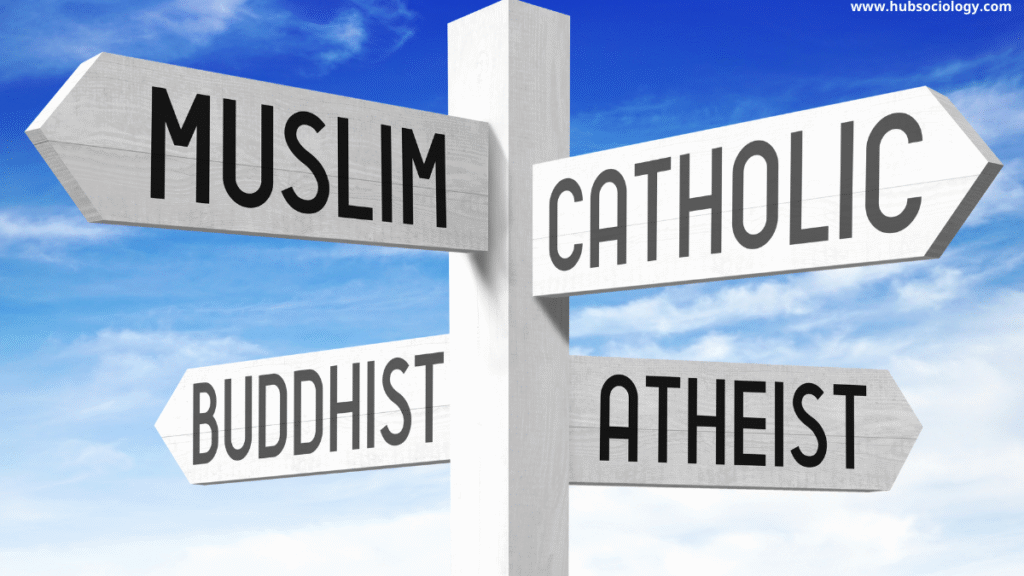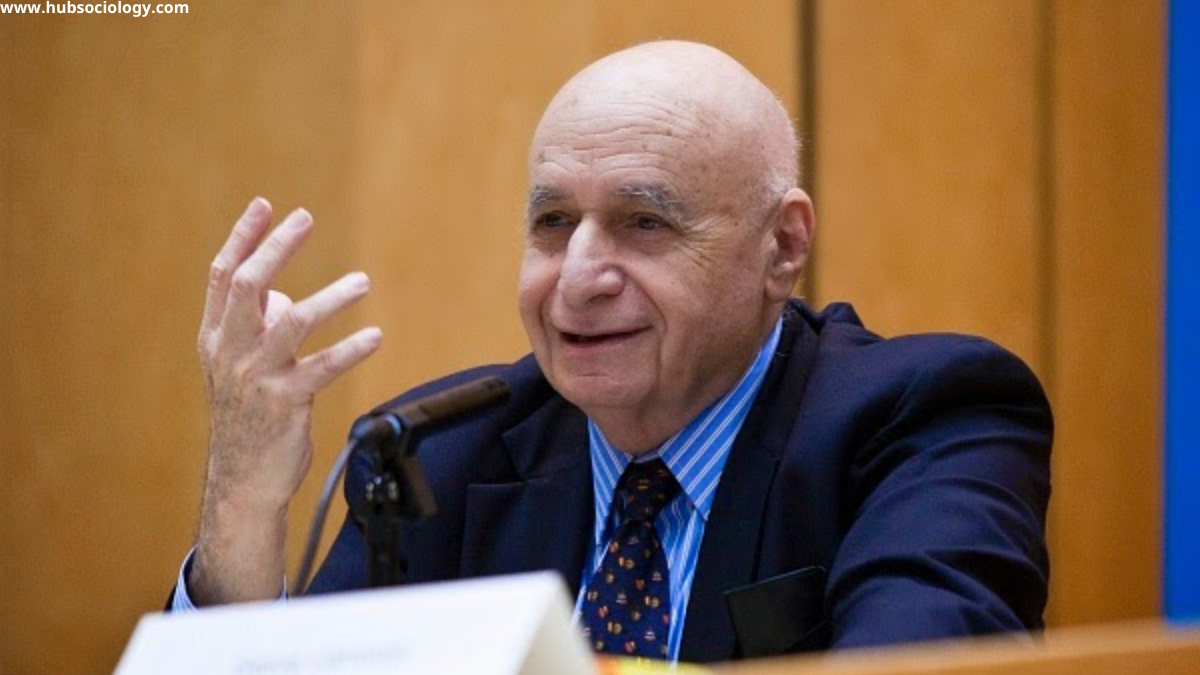Introduction on Peter L Berger on Contemporary Approaches
Religion has been one of the central concerns of sociology since its inception. Thinkers like Émile Durkheim, Karl Marx, and Max Weber laid the classical foundations for studying religion as a social phenomenon. However, in the twentieth century, Peter L Berger (1929–2017) emerged as one of the most influential sociologists of religion who redefined the way religion could be approached in contemporary societies. Berger’s work stands out for its nuanced understanding of religion as both a private and public reality, its relationship with modernity and secularization, and the challenges posed by pluralism in a globalized world. This article explores Berger’s contributions and their implications for contemporary approaches to the study of religion in sociology.

Table of Contents
Peter L Berger’s Sociological Approach to Religion
Peter Berger’s seminal work, The Sacred Canopy (1967), provides the backbone of his sociological approach to religion. He defines religion as a human enterprise by which a sacred order is constructed, legitimizing human existence in the face of chaos and meaninglessness. For Berger, religion serves as a “sacred canopy,” a sheltering framework of meaning that protects individuals from existential anxiety.
Berger’s approach differs from theological perspectives. He does not inquire into the truth of religious claims but rather focuses on how religions function within society. His emphasis lies on the social construction of reality, a concept he elaborated with Thomas Luckmann in The Social Construction of Reality (1966). According to this framework, religion, like all human institutions, is produced, maintained, and transformed through ongoing social processes. This lens is crucial for contemporary sociology, which seeks to analyze religion not merely as a set of beliefs but as a socially embedded phenomenon.
Religion, Secularization and Modernity
One of the most debated aspects of Berger’s thought is his contribution to secularization theory. Early in his career, Berger argued that modernization leads to secularization—that is, the decline of religious authority and influence in public and private life. He believed that rationalization, urbanization, and scientific progress undermine the plausibility of religious worldviews. For example, in The Sacred Canopy, he contended that the modern world erodes the “plausibility structures” that once sustained religious beliefs.
However, Berger later revised his views. By the late twentieth century, he admitted that the secularization thesis was overly deterministic. In works like The Desecularization of the World (1999), Berger observed that religion remained vibrant in most parts of the globe, with the exception of Western Europe. He concluded that modernity does not inevitably lead to secularization but rather to pluralism. Thus, rather than the disappearance of religion, contemporary societies face a multiplicity of religious and non-religious worldviews competing for legitimacy.

This shift in Berger’s thought illustrates a key contemporary approach: the recognition that religion and modernity coexist in complex ways. Religion adapts, transforms, and sometimes resurges in modern contexts, making it necessary to study religion not as a declining force but as a dynamic element of social life.
Pluralism and Religious Choice
Perhaps Berger’s most significant contribution to contemporary sociology of religion is his analysis of pluralism. In modern societies, individuals are exposed to a wide variety of religious and secular options. This exposure undermines the monopoly of any single tradition and forces individuals to choose among competing belief systems. Religion, therefore, becomes a matter of individual choice rather than inherited destiny.
Berger saw pluralism as both liberating and destabilizing. On one hand, it empowers individuals to exercise agency in shaping their spiritual lives. On the other hand, it erodes the taken-for-granted certainty that traditional religions once enjoyed. This condition of choice, negotiation, and uncertainty makes religion in modern societies a contested and fluid domain.
From a sociological standpoint, Berger’s focus on pluralism aligns with contemporary approaches that highlight religious diversity, interfaith dynamics, and the privatization of belief. His insights remain particularly relevant in an age of globalization, migration, and digital communication, where religious boundaries are constantly negotiated.
Religion and the Public Sphere
Berger also contributed to debates about the role of religion in the public sphere. While early secularization theorists predicted that religion would retreat into the private realm, Berger emphasized that religion continues to influence politics, culture, and social life in diverse ways. His analysis of American society, for instance, highlighted how religion persists as a powerful cultural and institutional force despite modernization.
In contemporary approaches, this resonates with the concept of “post-secular society,” advanced by thinkers like Jürgen Habermas. Both Berger and Habermas recognize that religion has not disappeared from public life but instead interacts with secular institutions in complex and sometimes contentious ways. For Berger, religion’s public presence requires sociologists to examine how religious groups negotiate legitimacy, authority, and influence in pluralistic contexts.
Peter L Berger’s Relevance for Contemporary Sociology of Religion
Peter L. Berger’s work remains vital for contemporary approaches to the study of religion for several reasons:
- Shift from Secularization to Pluralism – Berger’s acknowledgment of the limits of secularization theory paved the way for more nuanced understandings of religion’s resilience in modern societies.
- Social Construction of Religion – His perspective emphasizes that religion is not a fixed entity but a socially constructed and negotiated reality, shaped by ongoing interactions.
- Focus on Choice and Agency – Berger’s emphasis on pluralism highlights the role of individual decision-making in religious life, a key theme in contemporary sociology.
- Global Perspective – Berger was attentive to religious trends beyond Western Europe, recognizing that religious vitality in the Global South challenges Eurocentric assumptions about modernization and religion.
- Interdisciplinary Dialogue – His work bridges sociology with anthropology, philosophy, and theology, making it relevant for interdisciplinary debates about religion in the modern world.
Critiques of Berger’s Approach
While Berger’s contributions are profound, they are not without critiques. Some scholars argue that his early commitment to secularization theory overlooked the persistence of religion in many parts of the world. Others contend that his later embrace of pluralism risks overemphasizing individual choice while underestimating structural and institutional constraints on religious practice. Feminist scholars have also critiqued Berger for not sufficiently addressing gendered dimensions of religion.
Nevertheless, these critiques do not diminish his importance. Instead, they highlight the dynamic and evolving nature of sociological inquiry into religion, to which Berger’s work remains a foundational reference.
Conclusion on Peter L Berger on Contemporary Approaches
Peter L. Berger reshaped the study of religion in sociology by moving beyond deterministic models of secularization and by emphasizing pluralism, social construction, and individual choice. His insights remain crucial for contemporary approaches that seek to understand religion in a global, pluralistic, and modern context. Berger’s legacy lies not in offering definitive answers but in framing the questions that continue to guide sociological inquiry: How is religion constructed and sustained? How does it interact with modernity? What role does it play in both private belief and public life?

In a world where religion continues to shape identities, politics, and cultures, Berger’s thought reminds us that the study of religion must account for complexity, diversity, and change. His sociological imagination offers a lens through which we can better understand the enduring—and transforming—place of religion in contemporary society.
Do you like this this Article ? You Can follow as on :-
Facebook – https://www.facebook.com/hubsociology
Whatsapp Channel – https://whatsapp.com/channel/0029Vb6D8vGKWEKpJpu5QP0O
Gmail – hubsociology@gmail.com
Exam-style questions on Peter L Berger on Contemporary Approaches
5 Marks Questions on Peter L Berger on Contemporary Approaches
- Define Peter L Berger’s concept of the “Sacred Canopy.”
- What does Berger mean by the “social construction of reality”?
- How did Berger revise his views on secularization?
- Mention two critiques of Berger’s approach to religion.
- What role does pluralism play in Berger’s theory of religion?
10 Marks Questions on Peter L Berger on Contemporary Approaches
- Discuss Berger’s contribution to the secularization debate.
- Explain Berger’s understanding of religion as a socially constructed reality.
- How does Berger link modernization with religious pluralism?
- Analyze the significance of The Sacred Canopy in contemporary sociology of religion.
- Compare Berger’s views on religion with those of the classical sociologists (Durkheim, Marx, Weber).
15 Marks Questions on Peter L Berger on Contemporary Approaches
- Critically examine Peter L Berger’s analysis of religion in the context of modernity, secularization, and pluralism.
- Evaluate Berger’s concept of pluralism and its implications for the study of religion in contemporary global society.
- Discuss Berger’s shift from secularization theory to the theory of desecularization. How does this reflect broader changes in the sociology of religion?
- In what ways does Berger’s work contribute to the understanding of religion in the public sphere?
- “Peter L. Berger offers a middle path between the decline and persistence of religion.” Discuss with reference to his major works.
